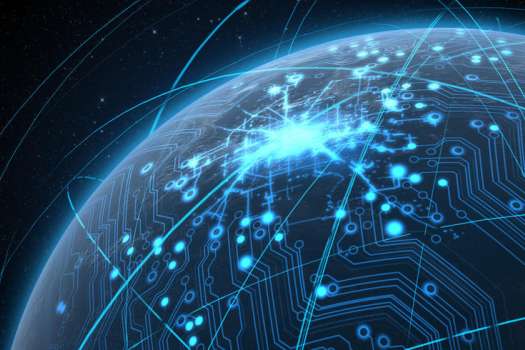All about edge computations in theses
Edge computing is when you generate, collect, and analyze data where the data is generated. To learn more about edge computing, IoT and big data experts and leaders should read this guide.
Many companies want Internet of Things (IoT) devices to monitor and report on events at remote sites, and this data processing must be done remotely. The term for this remote data collection and analysis is edge computing.
Edge computing technology is applied to smartphones, tablets, sensor-generated input, robotics, automated machines on manufacturing floors, and distributed analytics servers that are used for "on the spot" computing and analytics.
Read this cheat sheet to learn more about edge computing. We'll update this resource periodically with the latest information about edge computing.
Executive summary
- What is edge computing? Edge computing refers to generating, collecting, and analyzing data at the site where data generation occurs, and not necessarily at a centralized computing environment such as a data center. It uses digital devices--often placed at different locations--to transmit the data in real time or later to a central data repository.
- Why does edge computing matter? It is predicted that by 2020 more than five million smart sensors and other IoT devices will be in use around the world, and these devices will generate at least 507.5 zettabytes of data. Edge computing will help organizations handle this volume of data.
- Who does edge computing affect? IoT and edge computing are used in a broad cross-section of industries, which include hospitals, retailers, and logistics providers. Within these organizations, executives, business leaders, and production managers are some of the people who will rely on and benefit from edge computing.
- When is edge computing happening? Many companies have already deployed edge computing as part of their IoT strategy. As the numbers of IoT implementations increase, edge computing will likely become more prevalent.
- How can our company start using edge computing? Companies can install edge computing solutions in-house or subscribe to a cloud provider's edge computing service.
What is edge computing?
Edge computing is computing resources (e.g., servers, storage, software, and network connections) that are deployed at the edges of the enterprise. For most organizations, this requires a decentralization of computing resources so some of these resources are moved away from central data centers and directly into remote facilities such as offices, retail outlets, clinics, and factories.
Some IT professionals might argue that edge computing is not that different from traditional distributed computing, which saw computing power move out of the data center and into business departments and offices several decades ago. Edge computing is different because of the way edge computing is tethered to IoT data that is collected from remote sensors, smartphones, tablets, and machines. This data must be analyzed and reported on in real time so its outcomes are immediately actionable for personnel at the site.
IT teams in every industry use edge computing to monitor network security and to report on malware and/or viruses. When a breach is detected at the edge, the menaces can be quarantined, thereby preventing a compromise of the entire enterprise network.
From a business standpoint, here is how various industries use edge computing.
- Corporate facilities managers use IoT and edge computing to monitor the environmental settings and the security of their buildings.
- Semiconductor and electronics manufacturers use IoT and edge computing to monitor chip quality throughout the manufacturing process.
- Grocery chains monitor their cold chains to ensure that perishable food requiring specific humidity and temperature levels during storage and transport are maintained at those levels.
- Mining companies deploy edge computing with IoT sensors on trucks to track the vehicles as they enter remote areas. These companies also use edge computing to monitor equipment on the trucks in an attempt to prevent goods in transit from being stolen for resale in the black market.
For IT, edge computing is not a slam-dunk proposition--it presents significant challenges, which include:
- The sensors and other mobile devices deployed at remote sites for edge computing must be properly operated and maintained;
- Security must be in place to ensure that these remote devices are not compromised or tampered with;
- Training is often required for IT and for company operators in the business so they know how to work with edge computing and IoT devices;
- The business processes using IoT and edge computing must be revised frequently; and
- Since the devices on the edge of the enterprise will be emitting data that is important for decision makers throughout the company, IT must devise a way to find sufficient bandwidth to send all of this data (usually over internet) to the necessary points in the organization.
Why does edge computing matter?
It is projected that by 2020 there will be 5,635 million smart sensors and other IoT devices employed around the world. These smart IoT devices will generate over 507.5 zettabytes (1 zettabyte = 1 trillion gigabytes) of data.
By 2023, the global IoT market is expected to top $724.2 billion. The accumulation of IoT data, and the need to process it at local collection points, is what's driving edge computing.
Businesses will want to use this data--the catch is the data that IoT generates will come from sensors, smartphones, machines, and other smart devices that are located at enterprise edge points that are far from corporate headquarters. This IoT data can't just be sent into a central processor in the corporate data center as it is generated, because the volume of data that would have to move from all of these edge locations into HQs would overwhelm the bandwidth and service levels that are likely to be available over public internet or even private networks.
As organizations move their IT to the "edges" of the organization where the IoT devices are collecting data they are also implementing local edge commuting that can process this data on the spot without having to transport it to the corporate data center. This IoT data is used for operational analytics at remote facilities; the data enables local line managers and technicians to immediately act on the information they are getting.
Companies need to find ways to utilize IoT that pay off strategically and operationally. The greatest promise that IoT brings is in the operational area, where machine automation and auto alerts can foretell issues with networks, equipment, and infrastructure before they develop into full-blown disasters.
For instance, a tram operator in a large urban area could ascertain when a section of track will begin to fail and dispatch a maintenance crew to replace that section before it becomes problematic. Then the tram operator could notify customers via their mobile devices about the situation and suggest alternate routes. Great customer service helps boost revenues.
Who does edge computing affect?
Edge computing as a way of managing incoming data from IoT will affect companies of all sizes in virtually every public and private industry sector.
Projects can be as modest as placing automated security monitoring on your entryways, to monitoring vehicle fleets in motion, controlling robotics during telesurgery procedures, or automating factories and collecting data on the quality of goods being manufactured as they pass through various manufacturing operations half a globe away.
One driving factor is a focus on IoT by commercial software vendors, which are increasingly providing modules and capabilities in their software that exploit IoT data. Subscribing to these new capabilities doesn't necessarily mean that a company has to invest in major hardware, software, and networks, since so many of these resources are now available in the cloud and can be scalable from a price point perspective.
Companies that do not take advantage of the insights and actionability that IoT and edge computing can offer will likely be at a competitive disadvantage in the not so distant future. The tram use case cited earlier in this article is an excellent example: What if you operated a tram system, and you did not have IoT insights into the condition of your tracks or the ability to send messages to customers that advise them of alternate routes? What if your competitor has these capabilities? You would be at a competitive disadvantage.
When is edge computing happening?
Companies in virtually every public and private industry sector are already using IoT technology with an edge computing approach. Tech Pro Research in 2016 revealed that over half of all companies surveyed (which included large enterprises to very small businesses) had either implemented or were planning to implement IoT in the next 12 months; many of these organizations will use edge computing with their IoT strategies. (Tech Pro Research is a sister site of TechRepublic.) Regardless of where a company is with its IoT implementation, edge computing should be on every enterprise IT strategic roadmap.
Major IT vendors are the primary enablers of edge computing because they will be pushing their corporate customers to adopt it. These vendors are purveying edge solutions that encompass servers, storage, networking, bandwidth, and IoT devices.
Affordable cloud-based solutions for edge computing will enable companies of all sizes to move computers and storage to the edges of the enterprise. Cloud-based edge computing vendors also know the best ways to deploy edge computing with IoT to optimize results for the business.
How can our company start using edge computing?
Businesses can implement edge computing either on premise as a physical distribution of servers and data collection devices, or through cloud-based solutions. Intel, IBM, Nokia, Motorola, General Electric, Cisco, Microsoft, and many other tech vendors offer solutions that can fit on-premise and cloud-based scenarios. There are also vendors that specialize in the edge computing needs of particular industry verticals and IT applications, such as edge network security, logistics tracking and monitoring, and manufacturing automation. These vendors offer hardware, software, and networks, as well as consulting advice on how to manage and execute an edge computing strategy.
To enable a smooth flow of IoT generated information throughout the enterprise, IT needs to devise a communications architecture that can facilitate the real-time capture and actionability of IoT information at the edges of the enterprise, as well as figure out how to transfer this information from enterprise edges to central computing banks in the corporate data center. Companies want as many people as possible throughout the organization to get the information so they can act on it in strategically and operationally meaningful ways.
By Mary Shacklett
Mary E. Shacklett is president of Transworld Data, a technology research and market development firm.

